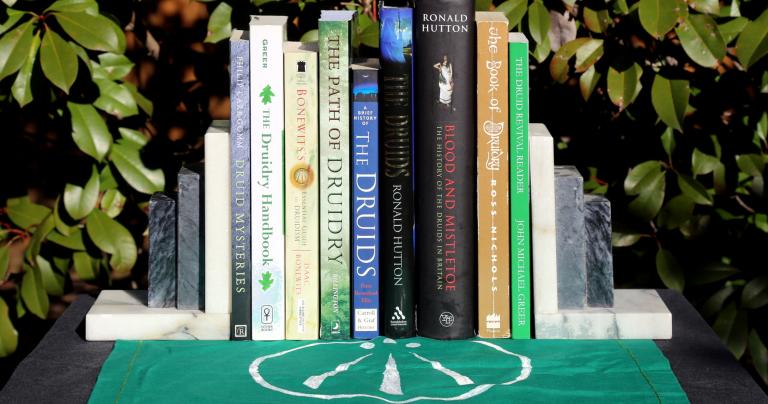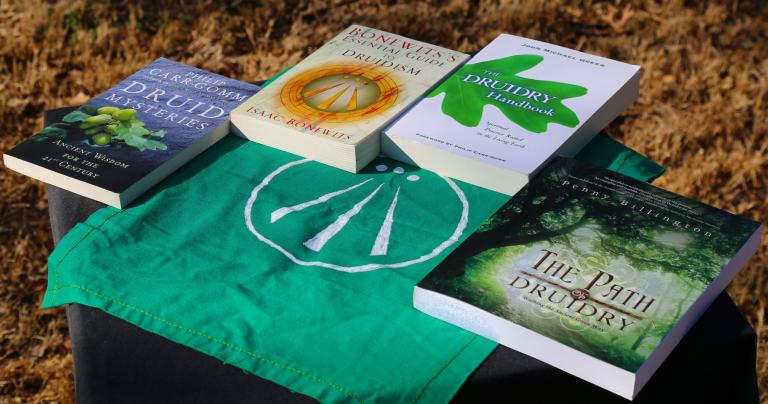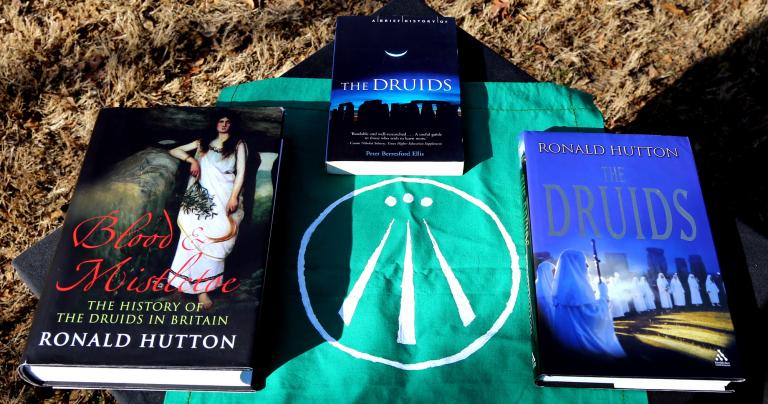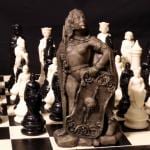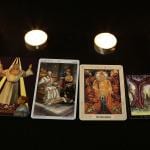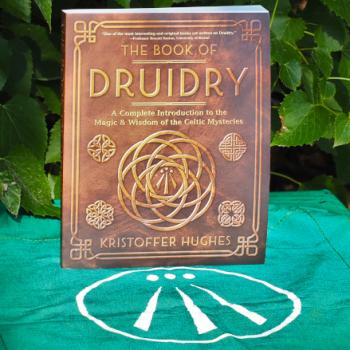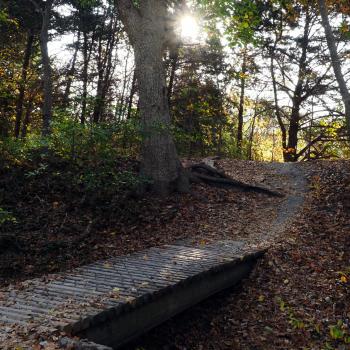“Hey, I’m interested in becoming a Druid. Can you recommend a book or two?”
I’ve been getting this question ever since I started on the path of Druidry, informally in 2001 and formally (through the OBOD course) in 2004. In 2011 I put together a blog post of Druid Reading Recommendations and I’ve been sharing and resharing it ever since.
It’s time to update that post. There’s nothing I want to take off the list, but there are a couple I need to add. And I need to pull some material from other reviews into one post.
There are dozens if not hundreds of books that can be helpful to Druids in their practice of Druidry, and perhaps someday I’ll compile a reading list for Druidry as I practice it. These are the handful of books that are most helpful to seekers as they try to figure out if modern Druidry is right for them, and to beginning Druids as they learn the history and heritage of our 300 year old movement.
Introduction to Druidry
I’ve recommended the first three of these for years with good feedback. Now I’m adding a fourth, to represent a slightly different approach and also in response to those who ask “aren’t there any Druid books written by women?” Druidry has historically been a male-dominated thing (because it originated when men dominated everything) but that is changing rapidly.
Druid Mysteries by Philip Carr-Gomm (2003). This book by the Chosen Chief of the Order of Bards Ovates and Druids is the best single place to start. It’s short (186 pages) and easy to read. It provides a brief introduction to the historical Druids, the revival Druids, and contemporary Druids. It includes some exercises to help you begin a Druid spiritual practice. And it includes a recommended reading list far longer than this one. If you read Druid Mysteries and do the work it recommends you’ll be in good shape to figure out where you need to go next.
The Druidry Handbook by John Michael Greer (2006). Past Grand Archdruid John Michael Greer wrote this as a textbook for the Ancient Order of Druids in America. It follows the same general outline as Druid Mysteries – historical Druids, revival Druids, and contemporary Druids – but it covers them in considerably more detail. It includes a section on the Ogham (the Druid tree alphabet), rituals for each of the eight major Pagan holidays, and the First Degree curriculum of the AODA. It’s intended to be a textbook – read it in short sections, do the work recommended, review the section, learn it well, then move on to the next section.
Bonewits’s Essential Guide to Druidism by Isaac Bonewits (2006). Isaac was the founder of ADF (Ár nDraíocht Féin) in 1983, and like ADF, this book takes a slightly different approach than most others. While it also covers historical and revival Druids, its contemporary section takes a reconstructive approach – it attempts to break with Western Mystery Tradition influences and return as closely as possible to the beliefs and practices of the ancient Celts. This book includes a very extensive recommended reading list, and just as helpful, a short list of books that are not recommended (because they contain material that is clearly inaccurate, or that is fabricated but presented as ancient).
The Path of Druidry by Penny Billington (2011). Penny is the editor of Touchstone, OBOD’s in-house magazine. Like the others here her book explains what Druidry is, but mainly it’s a guide to becoming a Druid without joining one of the major orders. Her method is grounded in the same tradition as OBOD and AODA, but it brings in some of Dion Fortune’s approach to spirituality. It’s not a substitute for the OBOD course – no single book can compare to three years (nominally) of weekly lessons. But for those who don’t want to commit to the time and expense of OBOD’s course, or who want a complementary approach to go with it, this is a good choice.
The Historical Druids
The important thing to remember about the historical Druids is that we know very little about them, and much of what we do know comes from questionable sources. That hasn’t stopped professional historians from making guesses about who they were and what they did. Some of those guesses are more likely than others.
A Brief History of the Druids by Peter Berresford Ellis (1994). This was one of the first books I read on the ancient Druids, and it remains one of the best. Ellis covers the general structure of the Celtic world in which the Druids lived and worked, the historical sources we have for them, and what we know or can reasonably guess about their beliefs, teachings, rituals, and work in their societies. Some of this involves speculation, but it’s reasonable speculation supported by evidence and logic. If you want a good guess at what the ancient Druids were really like, this is your best bet.
The Druids by Ronald Hutton (2008). This is another fairly short (240 pages) and easy to read book. Its premise is that while we can know very little about the ancient Druids with certainty, we do know how the Druids have been imagined over the last 500 years or so. They have been seen as patriots standing against the Roman invaders. They have been seen as priests of a bloodthirsty human-sacrificing religion – and thus convenient proxies in the Protestant-Catholic conflicts. They have been seen as peaceful elders with great knowledge of the natural world. Druids are portrayed in many different ways in the media and popular culture, and that has influenced how contemporary Druids see themselves. If you want to understand why people call themselves Druids, this is the book for you.
Blood and Mistletoe: the History of the Druids in Britain by Ronald Hutton (2011). Unlike the book discussed above, Blood and Mistletoe is long (491 pages, including 69 pages of notes and indices) and dense. Hutton is a professional historian and this book is intended to be a serious work of academic history. If you want the facts unglossed by speculation, this is the book for you.
Fair warning – there were many times when I found myself mentally screaming “I know we don’t know but what do you think happened?!” The bulk of the book concerns the Druid Revival that began in the 1700s and continues to this day. I did a full review of it here. If you’re serious about following a Druid path you should read this book at some point, but it’s not the best choice for beginners.
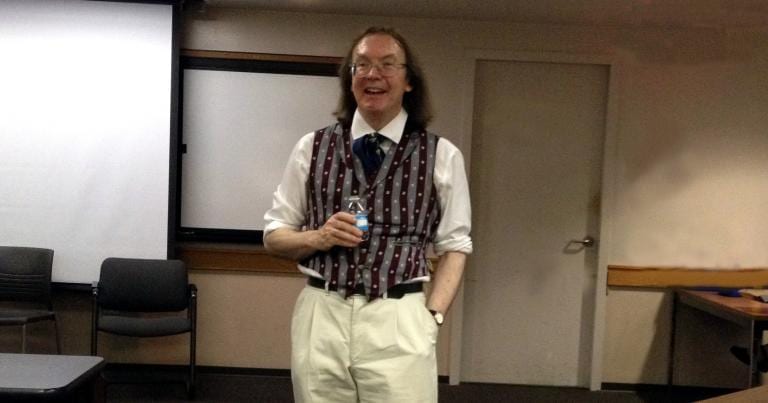
The Revival Druids
There were no Druids for a thousand years. When people began to revive Druidry in the 17th and 18th centuries, they did so in a society that was thoroughly Christian. Few if any of them saw Druidry as a religion. Instead, they saw it as a cultural heritage that they tried to reconcile with their own mostly-Anglican Christianity.
Whatever form your Druidry takes (mine is Pagan and polytheist), the Revival Druids are our ancestors of spirit. We owe it to them – and to ourselves – to learn something about them.
The Book of Druidry by Ross Nichols (1990). This is a guide to Druidry by Ross Nichols (1902 – 1975), the founder of the Order of Bards, Ovates and Druids. He wrote the book in segments over the course of his life. He finished it just before he died, but the manuscript was thought to be lost until 1984 when Philip Carr-Gomm collected the pieces. It was finally published in 1990.
As a book of esoteric teachings in the Druid tradition, it is invaluable. But some of its history is out of date, and at times Nichols makes definitive statements that can’t be verified and are unlikely at best.
This is not an easy book to read. Nichols’ writing changes lanes from historical to metaphorical to mystical and back again, all without using turn signals. The reader is never quite sure how a particular segment was meant to be understood. I read it in 2002 when I was just getting serious about Druidry and I really struggled with it. I re-read it after I finished the OBOD course in 2010 and it made much more sense the second time.
The Book of Druidry is not recommended for beginners, but if you consider yourself a Druid you need to read it eventually.
The Druid Revival Reader edited by John Michael Greer (2011). This is a better source for learning about the revival Druids. John Michael Greer compiled 12 essays on Druidry stretching over a 200 year period from 1743 to 1946. It includes writings from William Stukeley (the antiquarian who surveyed Stonehenge and Avebury), Iolo Morganwg (who would have been remembered in a very different light if he hadn’t tried to pass off his brilliant work as medieval Welsh discoveries), Rudolph Steiner, Lewis Spence, and Ross Nichols.
None of these Druids were explicitly Pagan. Most were Christians, though far from orthodox Christians (Iolo was a founding member of the Unitarian Association of South Wales). But they are our spiritual ancestors as Druids, and their ideas have influenced Pagan and Druid thinking from their time through today.
I did a full review of The Druid Revival Reader in 2013 that includes several excerpts.
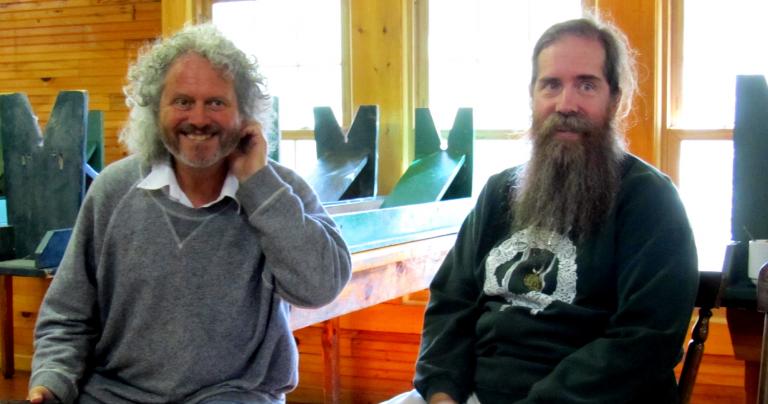
Avoid this book at all costs
The nine books listed above are my top recommendations on Druidry, but there are many other Druid books out there. Some of them are excellent, while others are good but unremarkable. Read as many as you like – the more the better.
But there is one book on Druidry you shouldn’t read: 21 Lessons of Merlyn by Douglas Monroe, otherwise known as 21 Lessons of Hogwash.
Subtitled “A Study in Druid Magic and Lore” this book is supposedly based on a 16th century manuscript called The Book of Pheryllt. Only problem is, that book doesn’t exist. Monroe’s book is fabricated, ahistorical, misogynistic, and if you take his mistletoe recipes seriously, hazardous to your health.
Don’t want to take my word for it? Here’s Isaac Bonewits’ review (and I believe it was Isaac who first retitled the book 21 Lessons of Hogwash). Here’s Celticist Lisa Spangenberg’s piece on The Book of Pheryllt. Also on the Digital Medievalist website is this page by page listing of errors by Ceisiwr Serith, author of A Book of Pagan Prayer.
So skip 21 Lessons of Hogwash. If you’re a beginner it will confuse you with inaccurate and potentially dangerous misinformation. If you’re beyond the beginning stage it will be a complete waste of your time.
Addendum: I’ve received some criticism for including Bonewits’s Essential Guide to Druidism because of the serious charges leveled against Isaac last year.
Isaac died in 2010 and is not here to defend himself. As I said at the time, only two things are certain: 1) Moira Greyland had a hellish childhood that no one should ever have to endure. And 2) as a religious movement and as a society, we must do a better job of protecting children and other vulnerable people from predators and other damaged individuals who would harm them.
That said, Bonewits’s Essential Guide to Druidism stands on its own merits as an introduction to Druidry, particularly for those who approach it in an ADF context. The royalties from its sale go to Isaac’s widow Phaedra, who can use every cent she can get.
If you’re uncomfortable reading this book, skip it and choose another.


